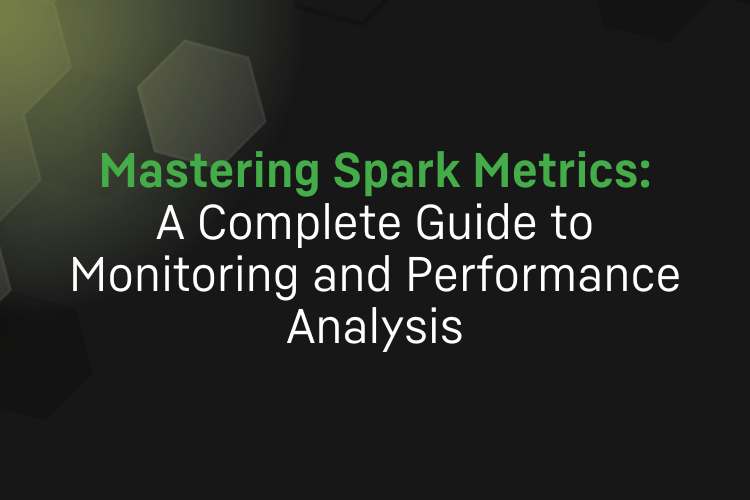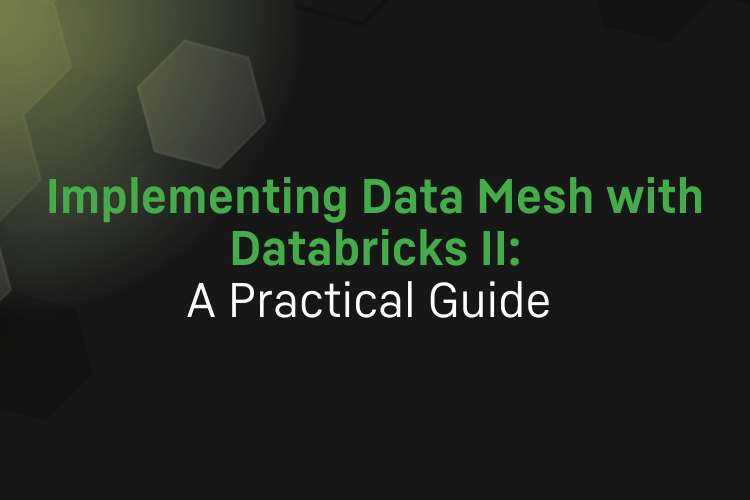by Ultra Tendency
Share
by Ultra Tendency

Picture this: you’re running a critical Apache Spark job in production, and suddenly performance tanks. Your stakeholders are breathing down your neck, but when you open the Spark UI, you’re staring at current metrics with no historical context to understand what went wrong. Sound familiar? You’re not alone.
Apache Spark’s distributed computing power is incredible, but it comes with complexity that makes monitoring absolutely essential for production workloads. While the Spark UI gives you some immediate insights, it’s like trying to diagnose a patient’s health using only their current temperature – you need the full picture.
Why the Spark UI Leaves You in the Dark
Don’t get me wrong – the Spark UI and Spark History Server are fantastic for quick debugging and understanding what’s happening right now. But here’s where they fall short in production environments:
You’re flying blind on historical trends. The UI shows you what’s happening now or what just finished, but what about last week’s performance baseline? Good luck with that manual detective work.
System-level insights are practically non-existent. Sure, you can see task-level details, but try finding comprehensive graphs showing how memory and CPU evolved across different jobs. Spoiler alert: they’re not there.
Comparing across jobs feels like archaeology. Want to understand why today’s ETL job ran slower than yesterday’s? Prepare for some serious manual digging through logs and metrics.
I’ve seen too many teams operate in this reactive mode, only realizing their monitoring gaps when they’re troubleshooting a critical performance issue at 2 AM without any historical context. Trust me, that’s not a phone call you want to take.
The Building Blocks: Understanding Spark Metrics
Before diving into fancy monitoring solutions, let’s understand what Spark actually measures for us. Think of it as your application’s vital signs across three key levels:
At the executor level, you’re monitoring the health of your worker nodes. CPU usage tells you if your processors are maxed out or idle, memory usage reveals heap pressure and garbage collection bottlenecks, and disk I/O metrics show you where storage becomes the limiting factor.
Task-level metrics give you the granular details. Task duration helps identify slow operations, shuffle performance often reveals your biggest bottlenecks (shuffle operations are notorious performance killers), and garbage collection time shows you when the JVM overhead is eating into your processing power.
Application-level metrics provide the big picture view. Job duration gives you end-to-end timing, stage duration breaks down where time is actually spent, and task counts help you understand the workload distribution.
The beauty of Spark’s metrics system is its flexibility – you can export this data to HTTP endpoints, JMX systems, or simple CSV files, depending on your infrastructure setup.
Quick Wins: The REST API Approach
If you’re just getting started or need something lightweight, Spark’s REST API is your friend. The Spark UI actually exposes endpoints that let you scrape metrics programmatically, which means you can build basic monitoring without heavy infrastructure investment.
This approach shines for quick performance health checks, basic trend analysis when you need to spot obvious patterns, integration with whatever monitoring system you’re already using, and budget-conscious solutions where every dollar counts.
It’s not going to replace a full-blown monitoring platform, but it’s a solid foundation that many teams overlook.
Enterprise-Grade Solutions: When You Need the Full Package
Databricks: Monitoring Made Easy
If you’re running on Databricks, you’re in luck. Their built-in compute metrics give you detailed cluster performance insights without any setup headaches. The interface shows CPU and memory utilization over time with breakdowns between user operations and kernel activities.
What I love about Databricks monitoring is that it’s automatic – no configuration overhead, no additional tools to maintain. You get real-time visualization, historical trends, and it even integrates with their optimization recommendations. It’s monitoring that just works.
Cloudera Data Platform: The Enterprise Heavyweight
CDP’s observability tool is what happens when you take monitoring seriously at enterprise scale. It doesn’t just collect metrics – it analyzes them intelligently.
The anomaly detection automatically flags when job durations or performance patterns look suspicious. The root cause analysis correlates metrics across different system components, so you’re not hunting through dozens of dashboards to understand what’s happening. For capacity planning, it uses historical data to predict future resource needs, and the cross-job analysis lets you compare performance patterns across different applications and timeframes.
It’s comprehensive, but it comes with enterprise complexity and pricing to match.
Open Source Alternatives: Power Without the Price Tag
Spark Measure: The Developer’s Secret Weapon
Luca Canali’s Spark Measure is a gem in the open-source world. It provides incredibly detailed metrics collection that you can integrate directly into your Spark applications.
You can embed it directly in your code for maximum control, or use the “flight recorder” mode for less invasive monitoring that captures metrics without touching your application logic. Either way, you get granular insights into task performance, memory allocation patterns, I/O bottlenecks, and shuffle operation efficiency that would make enterprise tools jealous.
Grafana + Telegraph: The Budget-Friendly Powerhouse
For teams operating under budget constraints or those who prefer open-source solutions, combining Grafana dashboards with Telegraph creates a surprisingly robust monitoring setup.
You get completely customizable dashboards tailored to your specific needs, real-time monitoring with live metric updates, historical analysis for long-term trend recognition, and alert integration for proactive notifications. The open-source nature means no licensing headaches, but you still get enterprise-grade monitoring capabilities.
Making It Work: Implementation Best Practices
Start simple and grow gradually. Begin with Spark’s built-in metrics and REST API to understand your baseline performance. As your needs evolve, layer on more sophisticated solutions. Don’t try to boil the ocean on day one.
Focus on what matters most. Spark generates tons of metrics, but focus on the ones that actually impact your applications. CPU and memory utilization reveal resource constraints, task duration variance helps detect data skew and inefficient operations, shuffle operations monitoring catches the most common performance killers, and job success rate tracking shows reliability trends over time.
Establish baselines and be proactive. Create performance baselines for your typical workloads and set up alerts that fire when something needs attention. This shifts you from reactive firefighting to proactive performance management.
Review regularly and optimize continuously. Schedule periodic reviews of your monitoring data to spot optimization opportunities and ensure your monitoring system keeps pace with your evolving needs.
The Strategic Impact: Beyond Just Monitoring
When done right, Spark metrics monitoring transforms from a debugging afterthought into a strategic business asset. You shift from reactive troubleshooting to proactive performance management, identifying issues before users notice them. Cost optimization becomes data-driven as you right-size resources based on actual usage patterns rather than guesswork.
Capacity planning becomes predictive rather than reactive, enabling data-driven infrastructure decisions. Perhaps most importantly, your team becomes more productive, spending less time firefighting performance issues and more time building value.
Wrapping Up: Your Monitoring Journey Starts Now
Spark metrics aren’t just nice-to-have operational overhead – they’re essential for any production data processing pipeline. While the Spark UI gives you immediate insights, real monitoring requires thoughtful planning and the right tools for your situation.
Whether you go with enterprise platforms like Databricks or CDP, or choose open-source solutions like Spark Measure with Grafana, the key is matching your monitoring approach to your organization’s scale, budget, and technical requirements. The upfront investment in proper monitoring pays dividends through improved reliability, optimized performance, and dramatically reduced operational headaches.
Remember, monitoring isn’t a project you complete – it’s an ongoing journey that evolves with your applications and infrastructure. Start with the basics, establish clear performance baselines, and gradually enhance your monitoring capabilities as your Spark expertise grows.
Your future self (and your on-call rotation) will thank you for making monitoring a priority today. After all, you can’t optimize what you can’t measure, and you can’t measure what you don’t monitor.




